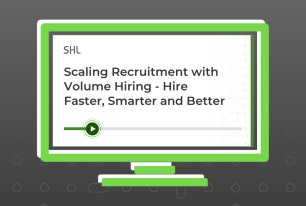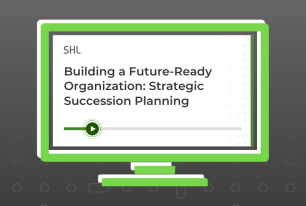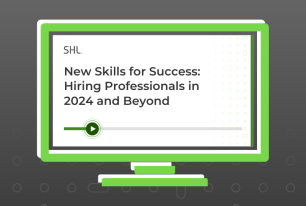Hiring from Within: How Organizations Are Future-Proofing Their Business
Hiring is predicted to slow down in 2024, while mobility will rise. How can leaders future-proof business through internal mobility?
Share
“Hiring around the world continues to decline.” That is the headline in LinkedIn’s most recent Global Talent Trends Report released last month. According to LinkedIn, in a sample of 20 countries, year-over-year hiring rates remain down. In reaction to changes in the global economy and labor market, as well as existing talent shortages, organizations are prioritizing internal mobility over external hiring. Companies are realizing that their best talent may already be within their own walls, and are putting more effort into identifying and retaining their top internal talent.
Leaders taking a more cautious approach to talent acquisition now have the chance to focus on better understanding and developing their internal talent, thereby setting up their organizations to withstand future labor-market and macroeconomic fluctuations. - Karin Kimbrough, Chief Economist at LinkedIn
What is internal mobility and why it matters?
Internal mobility refers to the movement of employees (vertically or laterally) to new career and development opportunities within the same organization. It is a key strategy for companies looking to foster growth and remain agile in business transitions. It can include promotions, lateral moves, job shadowing, and even job rotations. By encouraging internal mobility, companies are able to retain their top talent by providing them with opportunities to learn new skills and gain experience in different areas of the organization. This exposure provides them with new challenges and opportunities for growth leading to higher levels of job satisfaction and reducing flight risk.
Future-proofing business through internal mobility
In 2024, we can expect to see more companies implementing programs and initiatives that support internal mobility. This may include mentorship programs, leadership development training, and increased communication between departments.
Before focusing on retaining top talent, organizations should shift their emphasis from identifying high-potential employees (HIPOs) to recognizing the potential within every team member.
High potential employees (HIPOs) may be valuable, but narrowing the focus to this group alone overlooks the untapped potential within the broader employee base. Recognizing the skills and aspirations of all employees is essential for creating a dynamic and agile workforce.
Empowering all employees
Rather than concentrating solely on HIPOs, organizations should ensure that every employee is aware of the diverse opportunities available within the organization. Recognizing individual skill strengths and demonstrating how these can be leveraged in different roles or parts of the business is crucial. Providing clear career paths and offering structured development opportunities can boost engagement levels for all employees.
Creating a culture that actively supports internal mobility not only retains top talent but also fosters organizational resilience and agility. Allowing employees at every level to explore and grow within the company can significantly contribute to their job satisfaction and commitment.
As Stephanie Conway, Senior Director Talent Development at LinkedIn, aptly puts it, "We’ve long known that employees consider career-development opportunities to be one of the top reasons to stay at – or leave – their company."
By encouraging internal mobility, companies are able to retain their top talent.
What is next in 2024?
Of course, organizations will continue hiring in 2024, but at a more restrained pace. Forward-thinking talent leaders will be more strategic in their approach, focusing on specific skills in order to stay agile in the future of work. Adopting a skills-based hiring strategy enables organizations to hire for potential, expand talent pools, and mature their talent acquisition careers strategy. Soft skills, such as communication, teamwork, and adaptability, play a significant role in this approach. By prioritizing soft skills, companies can identify employees who possess the necessary abilities to excel in the role today and adapt to the changing work environment.
To learn how organizations are leveraging employee strengths across roles, successfully developing talent, and filling critical role gaps, join SHL’s Lisa Niesen (Head of Talent Management Solutions) and Lucy Beaumont (Solution Lead) on December 6th for their talk on 2024: Hiring Will Slow, Mobility Will Rise.











